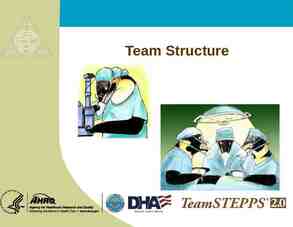Forensic Entomology Forensic Entomology 1
27 Slides3.32 MB

Forensic Entomology Forensic Entomology 1

Forensic Entomology Objectives You will understand: The stages of death. The role insects play in the decomposition of carrion. Postmortem interval and how it is estimated. The life cycle of insects. How variables affect results of scientific experiments. 2

Forensic Entomology Objectives, continued You will be able to: Distinguish among major insect types associated with carrion. Identify the relationship between insect type and the stages of death. Perform the same experiments that forensic entomologists do. Estimate time of death. Rear flies from pupae and larvae to adult. Explore variables affecting the determination of time of death. 3

Forensic Entomology Activities Test Your Knowledge of the Insect World Collection and Observation of Insects The Potato Corpse Estimating Time of Death The Effects of Temperature on Rearing of Maggots Fly Infestation as a Function of Habitat Beetle Infestation of Carrion Maggot Ingestion of Drugs from a Corpse 4

Forensic Entomology Taxonomy Classification of Things in an Orderly Way We are interested in the phylum, Arthropoda; class, Insecta; order: Diptera (flies) Coleoptera (beetles) 5

Forensic Entomology Forensic Entomology Entomology is the study of insects. Forensic entomology involves the use of insects and other arthropods to aid in legal investigations. There are three areas of application: Insect damage to structures Infestation of foodstuffs Insects that inhabit human remains The latter category is the subject of this chapter. 6

Forensic Entomology The Process of Death Algor Mortis: Body cooling rate Hours since death 98.4 F – internal body temperature 1.5 Livor Mortis: skin discoloration caused by pooling of blood Rigor Mortis: rigidity of skeletal muscles Temperature of body Stiffness of body Time since death Warm Not stiff Not dead more than 3 hours Warm Stiff Dead between 3 and 8 hours Cold Stiff Dead between 8 and 36 hours Cold Not stiff Dead for more than 36 hours A pathologist estimates time of death from these factors. 7

Forensic Entomology CALCULATING TIME OF DEATH USING ALGOR MORTIS Directions: Work in pairs to answer the following questions. Show your work as needed. Determine the approximate time of death using evidence from algor mortis. Show your work. 8

Forensic Entomology 1. Approximately how long has the victim been dead if his body temperature was 91.5 F? 98.4 F – internal body temperature 1.5 9

Forensic Entomology 2. A body found outside in the winter has a temperature of 91.5 F. Has the body been dead a longer or shorter time than in problem 1? Explain your answer. 10

Forensic Entomology 3. Approximately how long has the victim been dead if his body temperature was 78.6 F? 98.4 F – internal body temperature 1.5 11

Forensic Entomology 4. What is the approximate time of death if the body temperature was 60.1 F? 98.4 F – internal body temperature 1.5 12

Forensic Entomology 5. What is the approximate time of death if the body temperature was 50 F? 98.4 F – internal body temperature 1.5 13

Forensic Entomology 6. What is the approximate time of death if the body temperature was 84.9 F? 98.4 F – internal body temperature 1.5 14

Forensic Entomology 7. What is the approximate time of death if the body temperature was 75.2 F? 98.4 F – internal body temperature 1.5 15

Forensic Entomology The Process of Death, continued Stage Description Initial or fresh decay (autolysis) The cadaver appears fresh externally but is decomposing internally due to the activities of bacteria present before death (0–4 days). Putrefaction or bloating The cadaver is swollen by gas produced internally, accompanied by the odor of decaying flesh (4–10 days). Black putrefaction Flesh of creamy consistency, with exposed body parts black. Body collapses as gases escape. Fluids drain from body. Odor of decay very strong (10–20 days). Butyric fermentation Cadaver drying out. Some flesh remains at first; cheesy odor from butyric acid (20–50 days). Dry decay (diagenesis) Cadaver almost dry; slow rate of decay. May mummify (50–365 days). https://www.youtube.com/watch?v OFJrow7yaec 16

Forensic Entomology Post Mortem Interval Post Mortem Interval (PMI) – time that has elapsed since a person has died. 17

Forensic Entomology Life Cycle of Insects Metamorphosis egg larva (maggot) pupa The life cycle of Musca domestica winged adult 18

Forensic Entomology Time of Death Insects arrive at a decomposing body in a particular order (succession) and then complete their life cycle based on the surrounding temperature. By collecting and studying the types of insects found on a body and their metamorphic stage, a forensic entomologist can estimate the time of death. 19

Forensic Entomology Insects of Death Diptera First to arrive Blowflies Flesh flies Then Houseflies Flies can arrive within minutes. They lay eggs that hatch to maggots. Maggots feed on soft, mushy body parts. More insects arrive to feed on the body and each other. 20

Forensic Entomology Insects of Death, continued Coleoptera In rough order of appearance, from within hours to dry decay: Rove beetle Sexton beetle Clown beetle Dermestid beetle Hide beetle Some beetles feed on the corpse, some on maggots, some on other beetles. 21

Forensic Entomology Variables Affecting Metamorphosis Temperature The higher the temperature (within limits), the faster the growth. 22

Forensic Entomology Variables Affecting Metamorphosis, continued Habitat Fly species can vary geographically according to climate, season, and habitat. Phormia regina Lucilia illustris For example, the fly pictured on the left prefers shade; the one on the right, sunlit areas. 23

Forensic Entomology Other Applications of Forensic Entomology Damage to structures, clothing, foodstuffs Location of wounds on a corpse Linking suspect to scene of crime Source of contraband Type of insects can trace vehicle movement Presence of drugs in corpse 24

Forensic Entomology Lab Activity Maggot Ingestion of Drugs from a Corpse Flesh-eating insects concentrate drug residues in their bodies. 1. Dose liver with simulated drugs. 2. Add pupae and rear to 3rd instar. 3. Mash up larvae and apply spot tests. 25

Forensic Entomology Collection of Evidence Equipment: Hand Net Forceps and Trowel Thermometer Vials, Jars, Plastic Bags Supporting Data Needed: Previous weather for area On site weather data (5-7 days) Photos/videos of crime scene Record time of collecting 26

Forensic Entomology A Case Study Man exonerated of murder after 47 years based on data and photographs interpreted by Richard Merritt, forensic entomologist at Michigan State University 27






